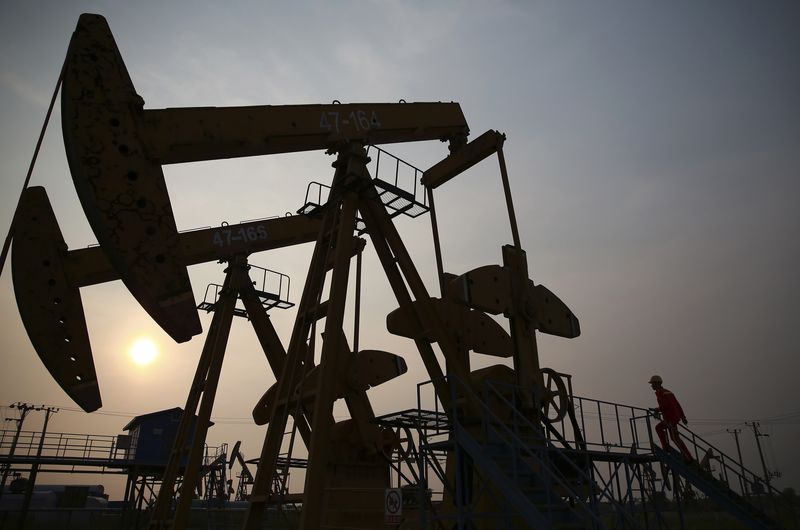Investing.com - Oil prices continued to rise on Tuesday morning in Asia on hopes that the trade dispute between the U.S. and China would deescalate without substantial damage to the global economy.
Crude Oil WTI Futures for May delivery were trading at $63.87 a barrel in Asia at 11:00PM ET (03:00 GMT), up 0.71%. Brent oil futures for June delivery, traded in London, were up 0.51% at $69 per barrel.
Shanghai Crude Oil WTI Futures for September delivery were up 2.35% at 409.90 yuan ($65.15) per barrel.
Concerns of a prolonged trade war between the world’s two biggest economies and uncertainty over the supply and demand balance of global oil markets have resulted in volatile trading over the last few days.
U.S. President Donald Trump threatened to impose new tariffs on China, triggering fears that if pushed hard enough, China could impose a tax on U.S. oil imported into China.
As the biggest importer of crude oil and the world’s largest energy consumer, China is a key determinant of global oil prices.
China’s Sinopec, Asia’s largest refiner, plans to cut Saudi crude imports in May by 40%, instead buying from alternative sources, after Saudi Aramco set higher-than-expected prices. The move signals that oil supplies remain ample.
In addition, changes in the Trump administration have raised risks of potential sanctions on key oil exporting countries including Iran, Venezuela and Russia.
Overall, oil prices remain supported by healthy demand and the supply restraint led by the Organization of the Petroleum Exporting Countries (OPEC) and Russia.
However, soaring U.S. crude production, which has increased by a quarter since mid-2016 to 10.46 million barrels per day (bpd), is undermining OPEC’s efforts to tighten the oversupply and prop up prices.
In the week to April 6, U.S. drillers added 11 rigs looking for new production, bringing the total count to 808, the highest level since March 2015. This indicates more U.S. crude output to come.
